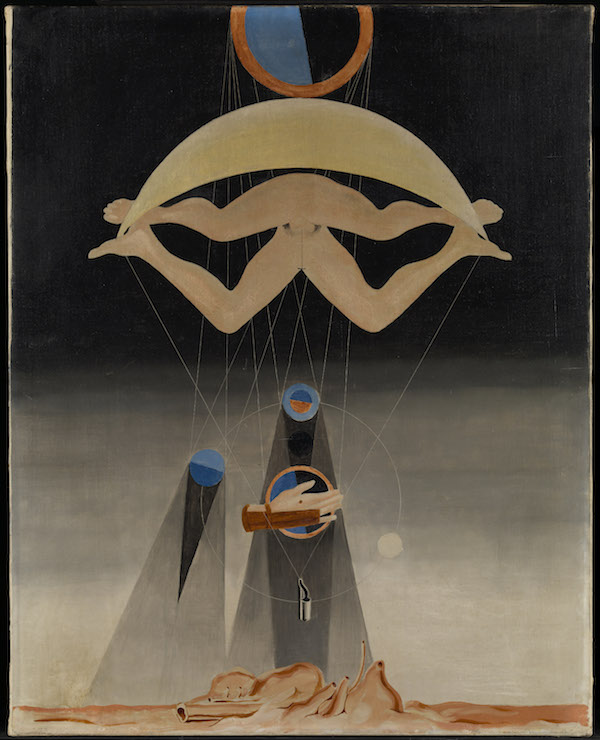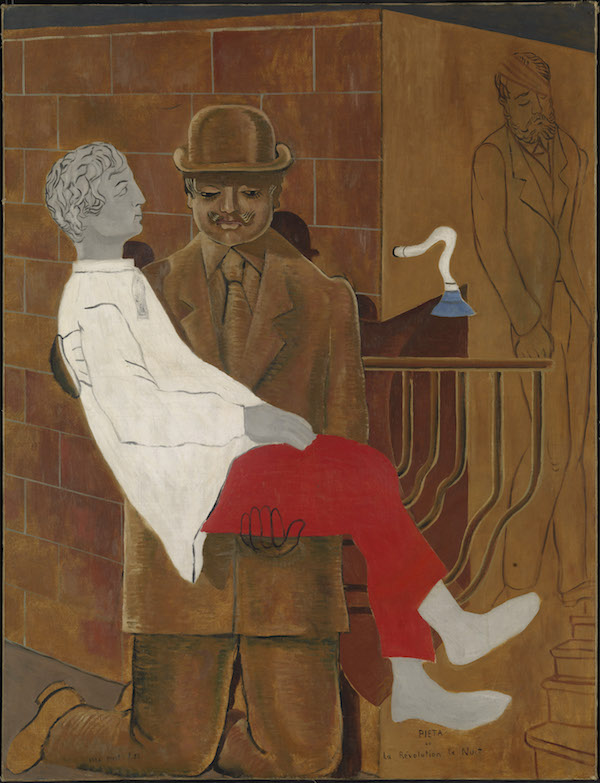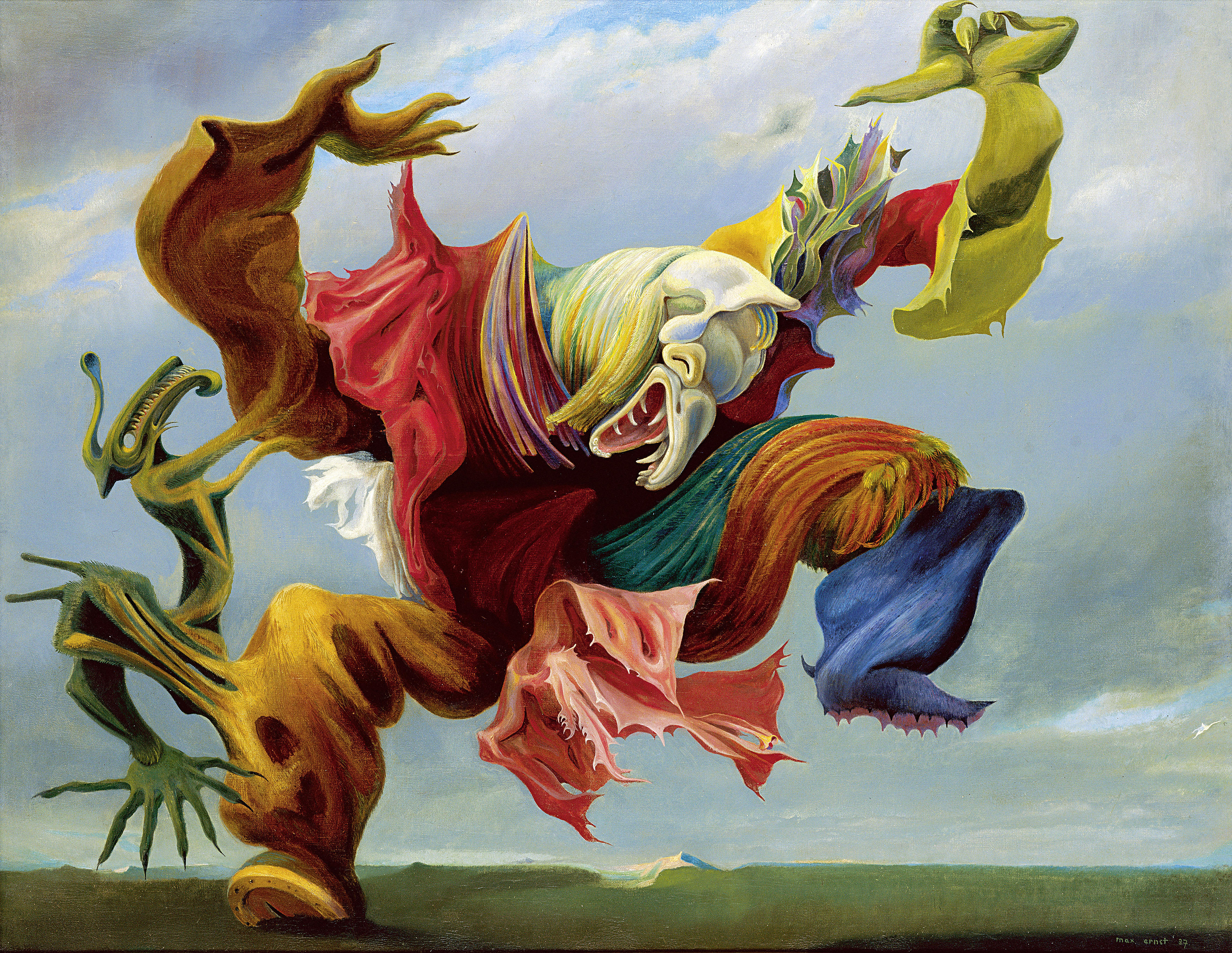Max Ernst, Edipus Rex, 1922. Oil on canvas, 93 x 102 cm. Private collection, Switzerland Album / Fine Arts Images / Mondadori Portfolio © Max Ernst by SIAE 2022
Ernst did not even think about promoting himself. At the Venice Biennale of ’54, for example, an usher did not recognize him and blocked him at the entrance, preventing him from participating in the ceremony for the delivery of the first prize for painting that had been assigned to him. The artist did not insist and went around the churches of the Serenissima, looking for a Tintoretto whom he wanted to admire since his arrival in the city.

Max Ernst, Men Will Know Nothing, 1923. Oil on canvas, 80.3 x 63.8 cm Tate, acquired in 1960 © Tate, London, 2022 © Max Ernst by SIAE 2022
“Ernst’s work”, Pech and Mazzotta affirm, “is extremely varied and multiform, it escapes any tangible definition, but it is always play, curiosity, wonder”. We will discover it at Palazzo Reale from 4 October to 23 February, in a full-bodied itinerary along 70 years of 20th century history, including paintings, sculptures, drawings, collages, photographs, illustrated books, some of which have been far from the exhibition scenes for several decades. On stage the story of a rich and adventurous creative parable, of illustrious friendships and extraordinary loves (Peggy Guggenheim, Leonora Carrington, Dorothea Tanning, the ménage-a-trois with Gala and the poet Paul Elouard), of war and imprisonment from “Degenerate artist” sought after by the Nazis, until he moved to the United States for a new season of experimentation.

Max Ernst, Pietà or The revolution at night, 1923. Oil on canvas, 116.2 x 88.9 cm. Tate, acquired in 1981 © Tate, London, 2022 © Max Ernst by SIAE 2022
In nine chapters, the exhibition promises visitors a complete walk in Ernst’s universe between references and correspondences, with a multidisciplinary approach like his art. Here presented as a “neo-renaissance humanist”, as well as an extraordinarily multifaceted artist, Ernst was a profound connoisseur and visionary interpreter of the history of art, philosophy, science and alchemy. His work opens up to the public like a gigantic wunderkammer, inviting him to dive into a world of intriguing puzzles and amazing games of perception. “The life and work of Ernst – conclude the curators – represent an extraordinary journey through the twentieth century and offer ingenious ways to make poetry what is banal, to look with courage at the dark as at the light, to extend the gaze to the limits of the visible – yesterday as today ”.

Max Ernst, L’Ange du Foyer, 1937. Oil on canvas, 54×74 cm. Private Collection
Read also:
• Relationships: 60 years of Richard Avedon at the Royal Palace

